(Solved): Com259 lesson 4 quiz Total score: 25 out of 25, 100%...
Com259 Lesson 4 Quiz
Total score: 25 out of 25, 100%
Question
1 of 25
Artifacts This type of nonverbal communication involves clothing and jewelry.
Question
2 of 25
Which of the following is the best alternative to the directive "File this!"?
- "Can you please file this if you have time?"
- "I know you are busy but can you file this? The personnel manager wants to keep this project organized."
- "Which file should this go in? When you know that, file it."
- "When you get around to it, can you please file this?"
Question
3 of 25
Regulators : ___________________
Question
4 of 25
Why must communicators be concerned with intimate, personal, social, and public zones in communication?
- People differ according to their tolerance for space, so when a communicator violates the rules of personal space as dictated by these zones, she/he may offend others.
- There is not much to be concerned about because most people have the same personal space tolerances.
- Intimate space and personal space are of no concern in the business context; only social and public zones merit attention.
- These zones dictate appropriate parking places.
Question
5 of 25
The four spatial communication zones are intimate, personal, semi personal, and social.
- True
- False
Question
6 of 25
Chronemics : _________________________
Question
7 of 25
Which element in a message deals with how the sender feels about the receiver and the consequences of that feeling for future interactions?
- Content
- Nonverbal communication
- Relational
- Interpretive
Question
8 of 25
Kinesics is the study of __________ in communication.
- words
- space
- paralanguage
- body movements and gestures
Question
9 of 25
Verbal communication is more difficult to control than nonverbal communication.
- True
- False
Question
10 of 25
The three functions of organizational messages are task, maintenance, and human relations.
- True
- False
Question
11 of 25
Illustrators : ________________________
Question
12 of 25
A student at the library spreading his papers, books, backpack, and jacket across a table is demonstrating territoriality.
- True
- False
Question
13 of 25
Affect
displays : ________________________
Question
14 of 25
Emblems : ________________________
Question
15 of 25
Kinesics : ________________________
Question
16 of 25
Adaptors : ________________________
Question
17 of 25
Proxemics : ________________________
Question
18 of 25
Oculesics is another word for eye behavior.
- True
- False
Question
19 of 25
How does accumulating situational knowledge about an organization's use of space, office design, and dress code help you become more strategic in your communication?
- This knowledge reveals few details about those in charge.
- This knowledge helps the communicator to take into account the organization's culture and climate when constructing messages.
- This knowledge helps the communicator get promoted.
- Because these nonverbal issues are so subjective, all a communicator can really do is guess what is appropriate and what is not.
Question
20 of 25
What is one thing that influences your perception when you interact with another person?
- The other person's perceptions
- Attitude toward that person
- The other person's communication style
- Situational anxiety
Question
21 of 25
Mutual understanding with disagreement translates into which of the following?
- "We understand each other and agree on the issue."
- "We don't understand each other and don't agree on the issue."
- "We understand each other but disagree on the issue."
- "We don't understand each other but really agree on the issue."
Question
22 of 25
Paralanguage is the use of __________ in communication.
- words
- vocal qualities
- emotions
- language
Question
23 of 25
Which environmental factors must a person take into account when setting effective oral communication goals?
- The communicator needs a good fit among workspace, design, and dress to project a capable, businesslike image.
- The communicator is wise to work for a company that provides ample office space and has no dress code.
- The communicator shouldn't worry about the environment as long as the communicator is happy.
- Workspace, design, and dress are merely parts of the overall communication climate.
Question
24 of 25
Oculesics : ________________________________________
Question
25 of 25
The personal bubbles mentioned in the textbook fluctuate depending on which factors?
- The situation and the people one is communicating with
- The personality and mood of the communicators
- The communication style of the interactants
- The gender and ethnic background of both the interactants
Expert Answer

Buy This Answer $15
-- OR --
Subscribe $20 / Month
